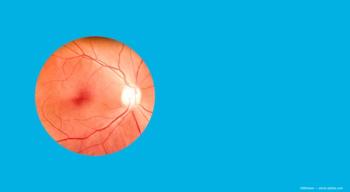
New dry eye treatment demonstrates rapid onset symptomatic relief
Results from the Phase 3 OPUS-3 trial provide evidence confirming a benefit of lifitegrast ophthalmic solution 5.0% (Xiidra, Shire) for significantly improving dry eye disease-related symptoms, as measured by Eye Dryness Score.
Reviewed by Edward J. Holland, MD
Cincinnati, OH-In OPUS-3, the third Phase 3 randomized, placebo-controlled, double-masked study investigating lifitegrast ophthalmic solution 5.0% (Xiidra, Shire) for treatment of dry eye disease (DED), the novel immunomodulatory agent met its primary endpoint, significantly improving patient-reported eye dryness at day 84. Importantly, the benefit of lifitegrast compared with placebo for reducing the DED-related symptom was seen as early as day 14, said Edward J. Holland, MD.
Related:
“The outcomes in OPUS-3 replicated the symptom improvement results observed in the Phase 3 OPUS-2 study and supported the FDA approval of lifitegrast,” said Dr. Holland, director of cornea services, Cincinnati Eye Institute, Cincinnati, OH, and an investigator in OPUS-3.
“It has been 13 years since a new medication was approved by the FDA for treatment of DED, and lifitegrast represents an important new option. Not only is it a unique immunomodulatory molecule that targets DED-related inflammation, but it provides the rapid symptomatic relief sought by patients who are bothered by DED.”
Recent:
Lifitegrast is a small molecule integrin antagonist that interferes with T-cell activation, migration, and release of inflammatory mediators by preventing binding between lymphocyte function-associated antigen-1 (LFA-1) and intercellular adhesion molecule-1 (ICAM-1). LFA-1 is a surface protein found on T-cells and ICAM-1 is a surface protein found on antigen presenting cells and upregulated on the surface of conjunctival endothelial and epithelial cells in eyes with DED.
OPUS-3 randomized 701 patients 1:1 to twice daily treatment with lifitegrast or placebo. Patients were eligible for inclusion if they had moderate-to-severe symptoms of DED as evidenced by an eye dryness score (EDS) ≥ 40 (rated on a visual analogue scale of 0 to 100 where 0 = none).
More:
Other key inclusion criteria required a Schirmer test without anesthesia result of ≥ 1 to ≤ 10 mm, corneal staining score ≥ 2.0, and a history of artificial tear use within 30 days of study entry.
Change in the EDS from baseline to day 84 was the primary endpoint, and the data analysis showed a statistically significant treatment effect (7.16 points; p = 0.0007) favoring lifitegrast. Mean change from baseline was -37.9 in the lifitegrast group and -30.7 for placebo-treated patients.
Secondary endpoint analyses of the treatment effect at earlier follow-up visits showed rapid onset of symptom relief with lifitegrast and statistically significant benefit compared with placebo. Mean change in EDS from baseline to day 14 was -22.9 for lifitegrast and -15.0 for placebo (treatment effect 7.85; p < 0.0001) and from baseline to day 42 was -33.2 for lifitegrast and -23.9 for placebo (treatment effect = 9.32; p < 0.0001), reported Dr. Holland, who is also professor of ophthalmology, University of Cincinnati.
Related:
The safety analyses corroborated findings from earlier studies showing lifitegrast was generally well-tolerated. There were no serious ocular treatment-emergent adverse events and the severity was mild for most ocular and non-ocular treatment-emergent adverse events.
The most common treatment-emergent adverse events with lifitegrast were instillation site irritation (burning) (18.2%), instillation site reaction (12.6%), and change in taste (12.9%). Incidence rates for these three adverse events in the placebo group were 3.1%, 5.4%, and 0.3%, respectively.
“The study also included patient ratings of drop comfort using an 11-point scale where 0 represents very comfortable and 10 is very uncomfortable. Within 3 minutes after instillation, drop comfort with instillation was rated < 3 by the majority of patients, and data collected at the serial follow-up visits showed the mean drop comfort scores improved over time,” said Dr. Holland.
More:
Edward J. Holland, MD
This article was adapted from Dr. Holland’s presentation at the 2016 annual meeting of the American Society of Cataract and Refractive Surgery Symposium. An article reporting the results of OPUS-3 has been accepted for publication in Ophthalmology. Dr. Holland is a consultant for Shire and for other companies that market products for DED.
Newsletter
Don’t miss out—get Ophthalmology Times updates on the latest clinical advancements and expert interviews, straight to your inbox.








.png)


